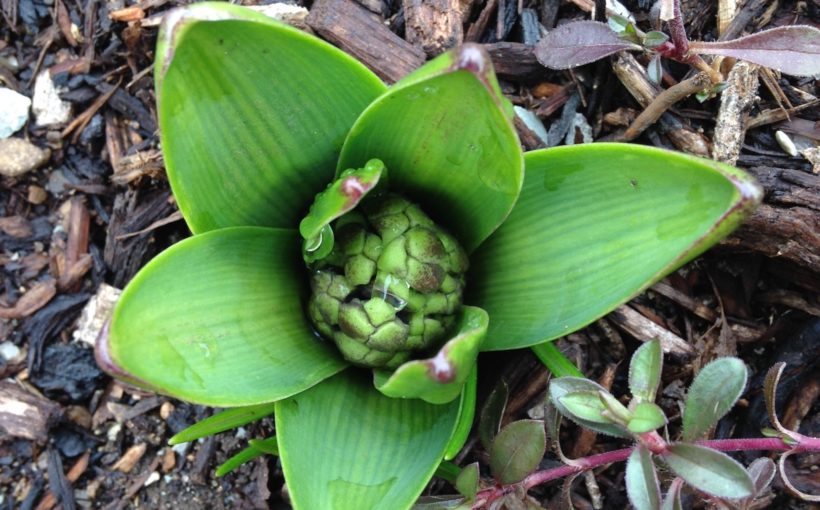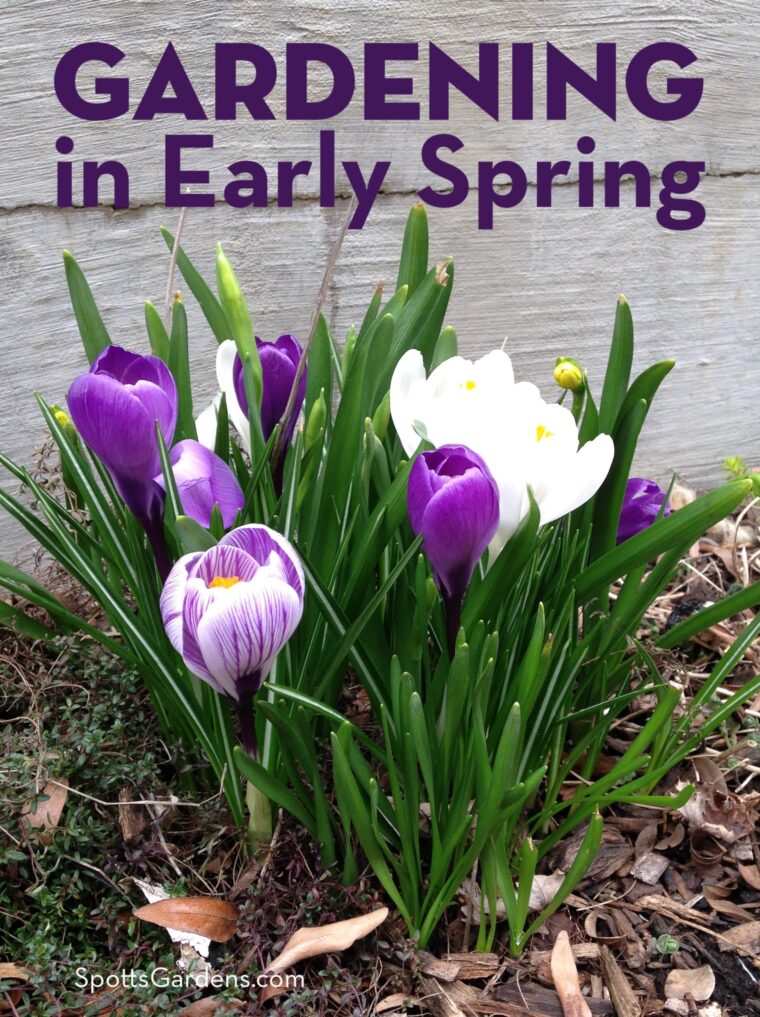Early spring is a challenging time for gardeners. We’re excited to head out into the yard, but we know better than to rush the season. Mild seasons like the winter of 2023 make it even more confusing. With temperatures in the 60s, some February days felt like May!
But no matter what the weather feels like, spring doesn’t really start until the spring equinox around March 20. And central Indiana gets frost right up to mid-May, so winter weather lasts longer than you might think.
So ease into the gardening year! Our tips for gardening in early spring will set you up for landscape success.
1. Avoid wet soil.
Digging in wet (and/or frozen) soil can damage the soil structure. To be sure that your soil is ready for planting, pick up a handful and squeeze it into a ball. Now poke at it with a finger. If the soil ball crumbles, you’re good to go. If it sits in a little clay ball (or could be shaped into an ashtray), it needs more time to dry out.
To maximize your chances for planting success, get a soil thermometer and use this chart to help you find out when the soil temperature is perfect for germinating your preferred vegetables. (No soil thermometer? An old meat thermometer works too!)
2. Leave spring bloomers alone.
Pruning is major (and important) gardening task in early spring. But avoid taking the pruners to spring bloomers like lilac, redbud, and viburnum. These plants flower on buds they grew last year. If you prune them before they bloom, you’ll be cutting off this year’s flowers.
For a list of what and what not to prune this time of year, check out our post Shrubs to Prune in Spring for the Best Blooms.
3. Don’t worry about bulbs.
Gardeners are often concerned that a freeze after their daffodil or tulip foliage is up will kill the flowers. No worries! Spring-blooming bulbs have evolved to deal with the changeable early-spring weather. Even a foot of snow on top of the green stalks won’t finish them off.
However, if your bulbs are blooming, a solid freeze might kill the bloom. In that case, just snap off the stem, let your bulb foliage ripen (turn brown and flop) as usual, and hope for better luck next year.
But we’ve also seen blooming daffodils, snowdrops, and crocus come through even heavy snowfalls unscathed, so sometimes you just have to wait and see.
4. Later for mulch.
Hold off on mulching your landscape and garden beds until the soil has time to warm up and dry out. Mulch acts as an insulating layer over the soil; mulching over cold soil holds the cold in. Your best bet for mulching in central Indiana absolutely no earlier than the middle of April. We prefer to wait until after May 1.
And whatever you do, avoid the dreaded mulch volcano!
5. Keep off the grass!
Leave your lawn alone. Mowing over wet soil is likely to compact soil and pull grass blades out by their roots. Turfgrass is set to grow like crazy this time of year without any additional fertilizer. So fertilizing in early spring encourages top growth at the expense of root health and encourages weeds more than grass.
+ Plan Your Projects
Early spring is a great time to tackle removing invasive plants and other undesirables in the yard. It’s also the perfect time to schedule projects for later this spring. Contact us today to schedule your Indianapolis garden work!

